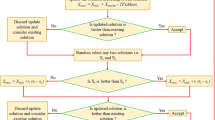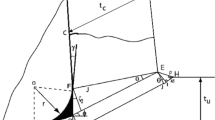Abstract
Increasing machining depth has imposed challenges to machine high aspect ratio features in electrochemical discharge machining (ECDM) of hard and brittle materials like borosilicate glass. As depth of machining (DOM) progresses, the machining is slowed due to insufficient availability of electrolyte at the tool tip. The stagnated electrolyte at the entrance of the hole causes increased radial overcut (ROC), heat-affected zone (HAZ), and taper (TP) and also reduced material removal rate (MRR), DOM, and circularity (CR). To overcome these challenges, the present study implemented a novel strategy using periodic bi-directional tool rotation (PBTR) with tungsten carbide helical drill. Initially, a flow simulation with KOH electrolyte has been conducted using COMSOL multi-physics platform to understand effect of the tool rotation on machining characteristics for both unidirectional tool rotation (UTR) and PBTR. It is found from the simulation that the PBTR shows better electrolyte supply to the tool tip as compared to UTR. Experiments are conducted with experimental plan based on L16 array. Experimental results disclosed that PBTR has resulted an improvement in MRR, DOM, and circularity and a decrease in HAZ, ROC, and TP of the machined hole. Parametric optimization is carried out using teaching learning-based optimization (TLBO) algorithm to evaluate the optimum process parameters. Optimum values are confirmed with by the experimental results.
























Similar content being viewed by others
Data availability
The authors confirm that the data supporting the findings of this study are available within the article.
References
Kang X, Tang W, Zhao W, Qian J, Lauwers B (2021) Experimental and numerical investigations of material removal process in electrochemical discharge machining of glass in discharge regime. Prec Eng 72:706–716
Singh T, Dvivedi A (2020) On prolongation of discharge regime during ECDM by titrated flow of electrolyte. Int J Adv Manuf Tech 107:1819–1834
Ranganayakulu J, Srihari PV, Rao KV (2022) An optimization strategy to improve performance in electrochemical discharge machining of borosilicate glass using graph theory algorithm and desirability index. SILICON 14:5241–5254
Xu Y, Jiang B (2021) Machining performance enhancement of deep micro drilling using electrochemical discharge machining under magnetohydrodynamic effect. Int J Adv Manuf Technol 113:883–892
Ranganayakulu J, Srihari PV (2021) Investigations on the effect of helical tool diameter assisted with high speed rotation in electrochemical discharge machining. Int J Prec Tech 10(1):60–73
Zhang Y, Wang C, Wang Y, Ji L, Tang J, Ni Q (2019) Effects of helical tube electrode structure on mixed machining product transfer in micro-machining channel during tube electrode high-speed electrochemical discharge machining. Micromachines 10(10):634
Rajendra KK, Murali S (2018) Study of gas film characterization and its effect in electrochemical discharge machining. Prec Eng 53:203–211
Mehrabi F, Farahnakian M, Elhami S, Razfar MR (2018) Application of electrolyte injection to the electro-chemical discharge machining (ECDM) on the optical glass. J Mater Proc Tech 255:665–672
Zhao D, Zhu H, Zhang Z, Xu K, Jian Gao J, Xueren Dai X, Huang L (2022) Influence of electrochemical discharge machining parameters on machining quality of microstructure. Int J Adv Manuf Technol 119:841–854
Ladeesh V, Manu R (2019) Grinding-aided electrochemical discharge drilling in the light of electrochemistry. Proc I MechE Part C: J Mech Eng Sci 233(6):1896–1909
Chen JC, Lin YA, Kuo CL, Ho CC, Yau WH (2019) An Improvement in the quality of holes drilled in quartz glass by electrochemical discharge machining. Smart Sci 7(3):169–174
Ho CC, Wu DS, Chen JC (2018) Flow-jet-assisted electrochemical discharge machining for quartz glass based on machine vision. Meas 128:71–83
Singh T, Dvivedi A, Shanu A, Dixit P (2021) Experimental investigations of energy channelization behavior in ultrasonic assisted electrochemical discharge machining. J Mater Proc Tech 293:117084
Elhami S, Razfar MR (2018) Effect of ultrasonic vibration on the single discharge of electrochemical discharge machining. Mat Manuf Proc 33(4):444–451
Chak SK, Venkateswararao P (2008) The drilling of Al2O3 using a pulsed DC supply with a rotary abrasive electrode by the electrochemical discharge process. Int J Adv Manuf Technol 39:633–641
International Standard, ISO 9276–6 (2008) (E), First edition, Representation of results of particle size analysis — Part 6: Descriptive and quantitative representation of particle shape and morphology, Switzerland
Bhattacharyya B, Doloi BN, Sorkhel SK (1999) Experimental investigations into electrochemical discharge machining (ECDM) of non-conductive ceramic materials. J Mater Proc Tech 95(1–3):145–154
Yang CT, Ho SS, Yan BH (2001) Micro hole machining of borosilicate glass through electrochemical discharge machining (ECDM). Key Eng Mater 196:149–166
Wuthrich R, Spaelter U, Wu Y, Bleuler H (2006) A systematic characterisation method for gravity feed micro-hole drilling in glass with spark assisted chemical engraving (SACE). J Micromech Microeng 16:1891
Gautam N, Jain VK (1998) Experimental investigations into ECSD process using various tool kinematics. Int J Mach Tools Manuf 38(1–2):15–27
Venkatarao R (2015) teaching learning based optimization algorithm and its engineering application, 1st edn. Springer publishing company, 2nd chapter, ISBN: 978–3319227313
Venkatarao R, Kalyankar VD (2013) Multi-pass turning process parameter optimization using teaching–learning-based optimization algorithm. Sci Iranica E 20(3):967–974
Tingli C, Minyou C, Peter JF, Yan Z, Gan S (2017) A novel hybrid teaching learning based multi-objective particle swarm optimization. Neuro Comp 222:11–25
Harishbabu B, Venkatarao K, Sathish BB (2021) Modeling and optimization of dead metal zone to reduce cutting forces in micro milling of hardened AISI D2 steel. J Brazilian Soc Mech Sci Eng 43:142
Funding
Authors received support from the Vision Group on Science & Technology, KSTePS, Department of IT, BT and S&T, Karnataka – 560 001, through KFIST Level (1) project under the VGST Scheme, No: KSTePS/VGST/GRD-678/KFIST(L1)/2018, 27.08.2018.
Author information
Authors and Affiliations
Contributions
Mr. Jinka Ranganayakulu and Dr. Podala Venkata Srihari have designed the experimental plan and carried out the experimentation. They also involved in analysis and preparation of manuscript. Dr. Kaki Venkata Rao have involved in analysis and optimization of process parameters.
Corresponding author
Ethics declarations
Ethics approval
Not applicable.
Consent to participate
Not applicable.
Consent for publication
Not applicable.
Competing interests
The authors declare no competing interests.
Additional information
Publisher's Note
Springer Nature remains neutral with regard to jurisdictional claims in published maps and institutional affiliations.
Rights and permissions
Springer Nature or its licensor holds exclusive rights to this article under a publishing agreement with the author(s) or other rightsholder(s); author self-archiving of the accepted manuscript version of this article is solely governed by the terms of such publishing agreement and applicable law.
About this article
Cite this article
Ranganayakulu, J., Srihari, P.V. & Rao, K.V. A strategy to improve performance in electrochemical discharge machining using periodic bi-directional tool rotation. Int J Adv Manuf Technol 123, 1459–1476 (2022). https://doi.org/10.1007/s00170-022-10227-x
Received:
Accepted:
Published:
Issue Date:
DOI: https://doi.org/10.1007/s00170-022-10227-x




